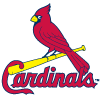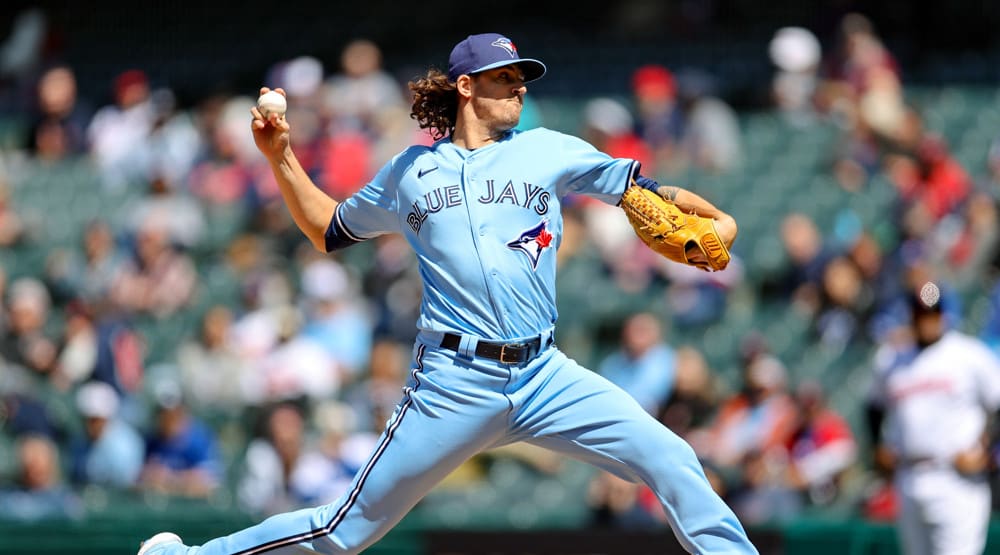Can A Pitcher Throw Too Many Strikes?
I heard a very interesting comment once referring to Phillies ace Cliff Lee. In essence, the comment suggested that Lee sometimes runs into trouble because he throws too many strikes. Is that possible? Every expert states when evaluating pitchers, that "he needs to throw more strikes" or "he is in the strike zone with almost every pitch." Isn't that the idea? I mean, every time one of my guys walks a batter, he comes around to score, not to mention that nasty hit to my WHIP. So, I suppose it's easy to decide that you don't want your guy to throw pitches out of the zone. Still, if you really think about it, there have probably been many games where your pitcher got out of a sticky situation when a hitter swung at a pitch out of the zone. Maybe there is actually something to this "too many strikes" thing. Let's take a look...
There is actually a time, and a place, for throwing strikes...
Count is perhaps the most critical factor in determining whether the next pitch should be a strike. For example, consistent first-pitch strikes typically result in better performances. I always watch for pitchers who throw first-pitch strikes. Getting ahead in the count is one of the most important aspects of the pitching art. When he is ahead in the count, even 0-1, the pitcher opens up a much more varied menu for the hitter to choose from. What's
Can A Pitcher Throw Too Many Strikes?
I heard a very interesting comment once referring to Phillies ace Cliff Lee. In essence, the comment suggested that Lee sometimes runs into trouble because he throws too many strikes. Is that possible? Every expert states when evaluating pitchers, that "he needs to throw more strikes" or "he is in the strike zone with almost every pitch." Isn't that the idea? I mean, every time one of my guys walks a batter, he comes around to score, not to mention that nasty hit to my WHIP. So, I suppose it's easy to decide that you don't want your guy to throw pitches out of the zone. Still, if you really think about it, there have probably been many games where your pitcher got out of a sticky situation when a hitter swung at a pitch out of the zone. Maybe there is actually something to this "too many strikes" thing. Let's take a look...
There is actually a time, and a place, for throwing strikes...
Count is perhaps the most critical factor in determining whether the next pitch should be a strike. For example, consistent first-pitch strikes typically result in better performances. I always watch for pitchers who throw first-pitch strikes. Getting ahead in the count is one of the most important aspects of the pitching art. When he is ahead in the count, even 0-1, the pitcher opens up a much more varied menu for the hitter to choose from. What's next? A breaking ball down and away? A fastball in on the hands? An off-speed offering that will be difficult to time? It might be any of those, and that next pitch is certainly not guaranteed to be what the pitcher has been relying on most of the game. The hitter is guessing, and there aren't many clues being provided.
When the hitter is guessing, it's automatically, advantage pitcher, and that's what being a successful pitcher is really all about. So, if a first-pitch strike is that important, what impact does that have on subsequent pitches? Unless you are Manny Sanguillen or Vladimir Guerrero, pitches in the strike zone are much easier to hit. If you have to "expand the strike zone" to protect yourself because you are down in the count, you will find yourself swinging at pitches out of the zone. Ah ha! That's when throwing too many pitches in the strike zone could be a bad thing. If pitches out of the zone are harder to hit, and a pitcher can entice hitters to swing at those pitches, good things can happen.
Given that fact, we can add the ability to throw meaningful pitches outside the zone to the traits we want to see as we continue our quest to uncover the best pitchers for our fantasy team. Throwing "purpose" pitches outside the zone can also be a positive. Look for guys that consistently get ahead in the count, and then deliver appealing pitches close to, but outside the prime hitting zone. They may use it to change the hitter's eye level, or change speeds to impact his timing. Both are effective. When behind in the count, being able to throw a quality strike is certainly the ideal, but 1-2 and 0-2, etc. are pitcher's counts and should belong to your pitcher. If he can take advantage of those scenarios, his ERA will drop, and his strikeout rate will likely go up. Nothing is more frustrating when watching a pitcher than having your guy toss an 0-2 pitch over the heart of the plate resulting in a key hit to extend an inning or score a critical run. Actually, a tendency to do that is often marked as a significant negative in the analysis of a pitcher, so the answer is yes, it is possible to throw too many strikes, but it is not really possible to throw too many quality pitches, in or out of the strike zone.
Here are things to watch for regarding the timing and placement of strikes:
- First things first. Getting ahead in the count is one of the most important things a pitcher can do to produce a chance to win. Always watch for pitchers who consistently throw quality strikes on the first pitch to a batter. Ball one on the first pitch quickly reduces the array of pitches a hitter feels compelled to consider for subsequent offerings. Fewer options equal a better chance to make contact.
- Make sure the pitcher always has a plan. When you hear about someone being a "pitcher" rather than a "thrower" it usually refers to the pitcher using every pitch to set up a future offering. A well-placed pitch up and in, usually not a strike, can often make the batter less capable of handling a pitch at the bottom of the strike zone on the outer edge of the plate. There was a reason for that ball.
- When ahead in the count, especially with two strikes, a pitcher will sometimes "waste a pitch" with something out of the zone. The best pitchers rarely actually "waste" a pitch. They are attempting to get the hitter to swing at a pitch that is close enough to look like a strike, but ends up outside the hitting zone. The key is whether or not the pitch was an "easy take." If the hitter could immediately recognize a ball, it was truly a wasted pitch, if not, the pitch served its purpose.
- Finally, most pitchers need to throw pitches outside the strike zone. The art of pitching is all about keeping the batter off balance, disrupting his timing, and creating an environment where he doesn't really know what to expect next. Most major league hitters can hit a fastball, no matter how fast, if they know it is coming and they are reasonably sure it will be in the strike zone. The guys we want are the pitchers who can mix things up, getting ahead in the count, and forcing the hitter to expand his strike zone while guessing what pitch is coming.
Some Notable Rotation Happenings:
Brett Myers (CLE) - I heard a stat I had to look up to believe. It was true; Myers has served up eight home runs in just over 16 innings. Pedestrian fastballs, with inconsistent command is a recipe for disaster. I would definitely leave him off my rotation menu.
Joe Blanton (LAA) - He's right on Myers' heels with six long ones in 14-plus innings, and he puts a lot of guys on base before giving them up. A lot of analysts talk about him having the potential to be a fantasy asset, but I don't see it. He's simply too hittable, and too many baserunners will continue to haunt both Blanton and his fantasy owners.
Chris Capuano (LAD) - It looked like he would get a regular turn with Zack Greinke out for about eight weeks. He was a nice backend fantasy option last year, and there is no reason to doubt his ability to do the same this year. I'm buying, provided that he makes it back from the 15-day DL from his calf injury soon enough to take the job back from Ted Lilly.
A.J. Griffin (OAK) - He's slowly making a believer out of me. He enjoys the advantage of pitching his home games in Oakland, and he doesn't have overwhelming stuff, but he gets the job done with solid command. Low strikeout totals would be the drawback.
Tony Cingrani (CIN) - There will likely be a lot of buzz regarding Cingrani, especially after he faced a punchless Miami lineup in his start Thursday night. To be honest, I like his arm, but I'm not sure his off-speed stuff is good enough to earn him ongoing success at the major league level right now, at least not in the rotation, so buyer beware.
Matt Moore (TB) - The good news is he has been borderline unhittable early on. The bad news is he still misses the strike zone too often. He has the skill set to move up near the top of the list for starting pitchers, and only needs a little more command to get there. If you own him, celebrate, if not, hope for a couple of bad starts, and make an offer.
Homer Bailey (CIN) - A healthy and focused Bailey can be a big fantasy asset. The problem is, you can never really be sure if you are getting Dr. Bailey or Mr. Hyde so he is only a pitcher for the brave at heart. I really do think he could be a nice arm, and he showed that in his last start. Which Bailey will we see the next time out?
Barry Zito (SF) - If you were thinking two scoreless starts to celebrate the opening of the 2013 season was marking Zito's return to the glory days, look again. Reality set in for the soft-tosser, and nine earned runs without finishing the third inning could be called an abrupt adjustment to the norm. He's not this bad, but he wasn't that good.
Dan Haren (WAS) - Maybe it was injuries to his hip and/or back, but he hasn't been himself. He isn't walking anyone, but his decreased velocity isn't helping, and he is up in the strike zone far too often. With his current stuff, he'll have to fool hitters somehow because center-cut isn't fooling anyone.
The Endgame Odyssey:
With Jason Motte probably out long term, Mitchell Boggs has the chance to grab the closer's role, but he is struggling. Trevor Rosenthal is probably the best bet at some point, but he hasn't had the smoothest road either. The Cardinals gave Edward Mujica the save chance Thursday and he recored the final four outs to convert it. Kyuji Fujikawa got a chance with the Cubs, and promptly ended up on the DL. Carlos Marmol might get another try since the alternatives are limited (James Russell or Shawn Camp, I'll pass), but Fujikawa is still the guy to own. In Boston, Joel Hanrahan has a sore hamstring and, earned a DL trip. Andrew Bailey could be interim or longer. Greg Holland is hanging on to the closer's gig in Kansas City, and was very sharp in a save against the Braves on Wednesday. He's not a lock, not yet. The Pirates have to be happy with the job Jason Grilli has been doing, so his hold on the gig is getting stronger. In San Francisco, Sergio Romo has been effective, but the Giants would really like to see him back in a set-up role where they can better control his workload. He may be passed over for an occasional save, but they aren't likely to make a full-time move without a solid option. Toronto's Sergio Santos landed on the DL, but it's not related to the shoulder that cost him most of 2012. He has had triceps soreness most of the spring, so they shut him down to allow it to heal. That strengthens Casey Janssen's hold on the job, and as long as he performs, the Jays will likely keep Santos in a setup role.




























